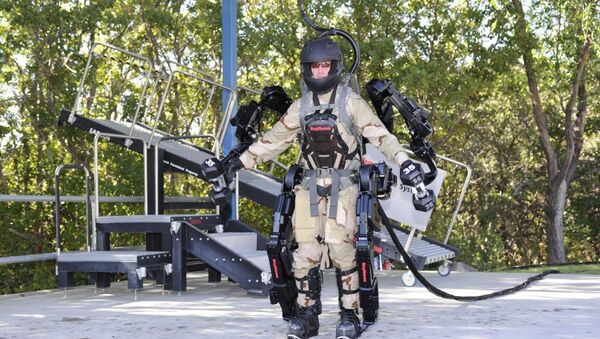“Among other things, they will be discussing the test results of ceramic elements of a soldier’s body armor and of the efficiency of new types of firearms in different combat situations,” Romanyuta said.
He also mentioned the great deal of professional interest in the ongoing efforts to improve the effectiveness of various types of combat gear “on the basis of advanced technology and high-tech materials” such as exoskeletons and robotic systems.
“The addition of such physique-boosting elements as exoskeletons or robotic systems is a good way to go,” the Defense Ministry press service quoted Romanyuta as saying.
Russian military engineers are working to develop unified combat subsystems where a soldier acts as part of a single structure.
The combat soldier equipment of the third generation will integrate various biomechanical tools, including exoskeletons.
The soldier will maintain stable radio contact with all its other elements and receive continuously updated reconnaissance data about the enemy positions and the overall situation the combat zone making him an intellectual fighting machine.
Russian scientists and engineers are also working on a technology that is straight out of science fiction: bionic exoskeleton suits controlled by the human brain.
The main function of a powered exoskeleton is to assist the wearer by boosting their strength and endurance. They are commonly designed for military use, to help soldiers carry heavy loads both in and out of combat.



